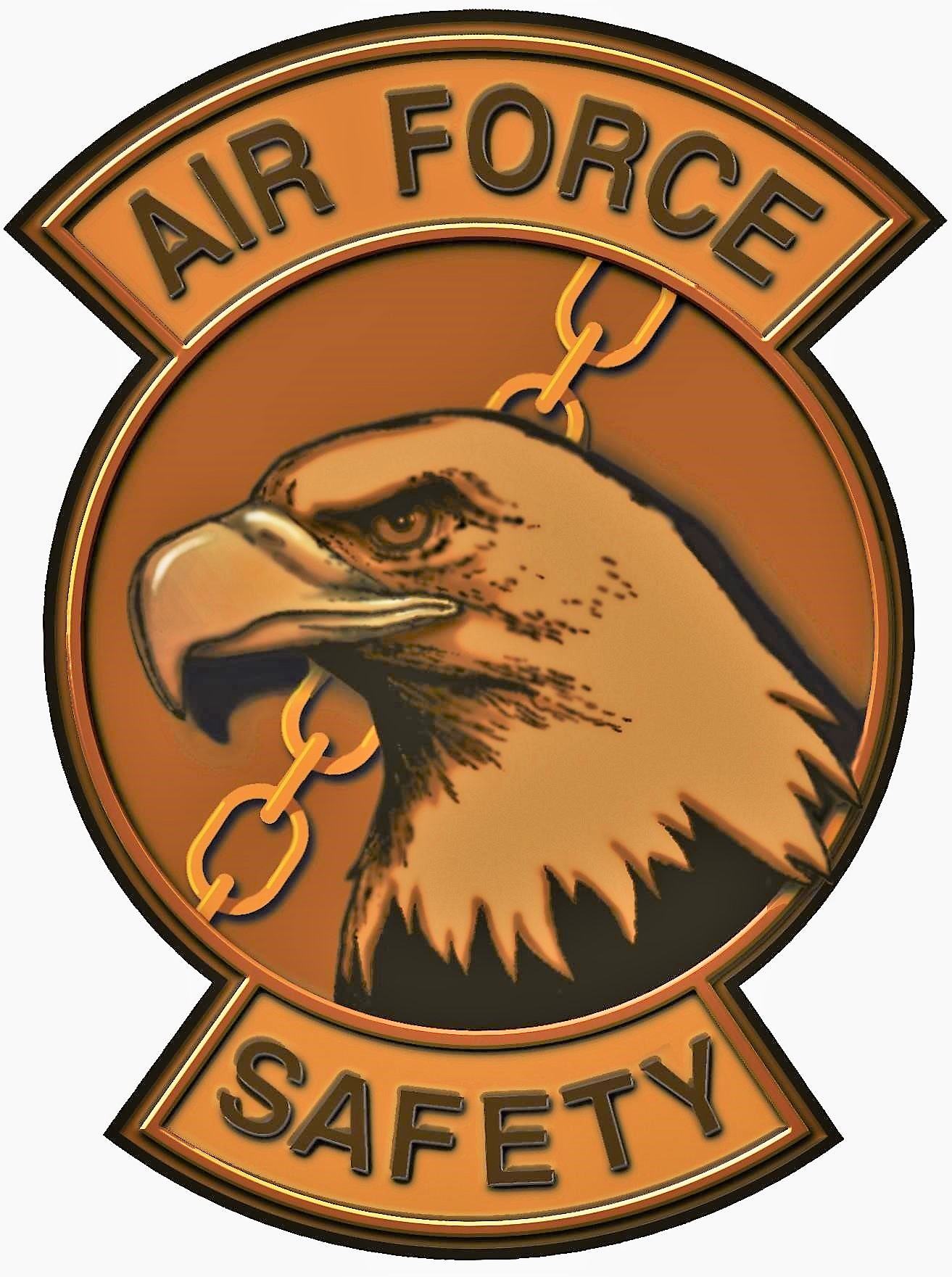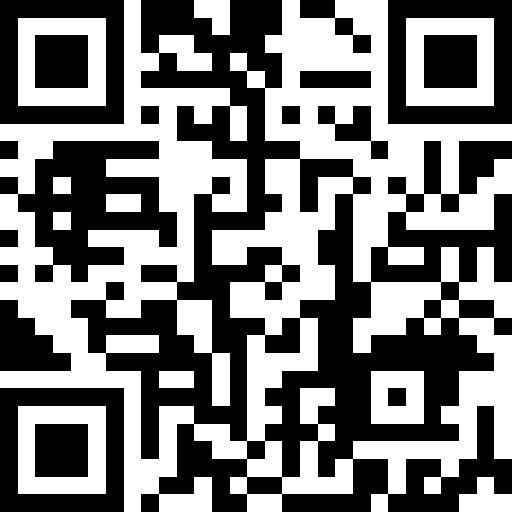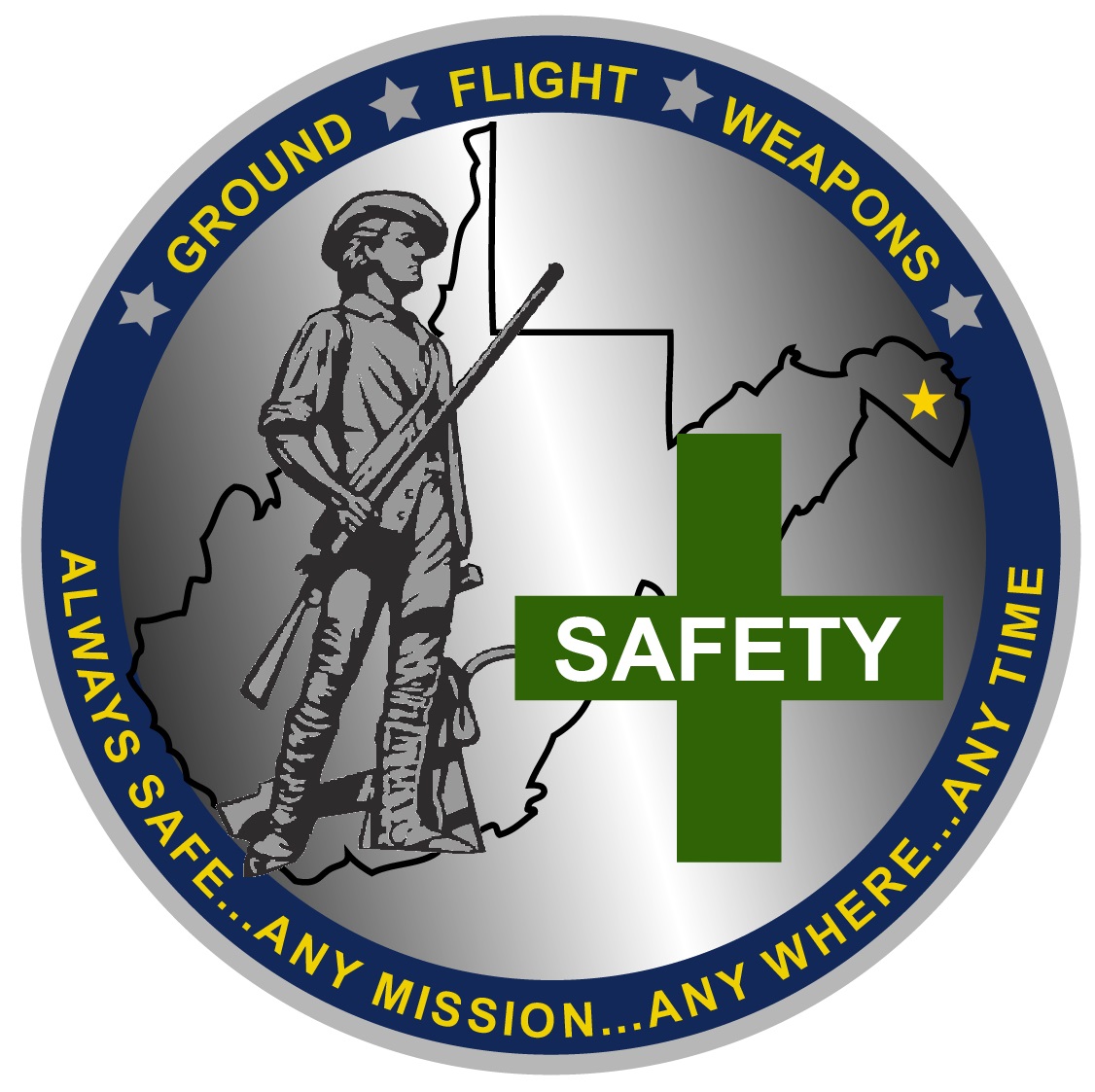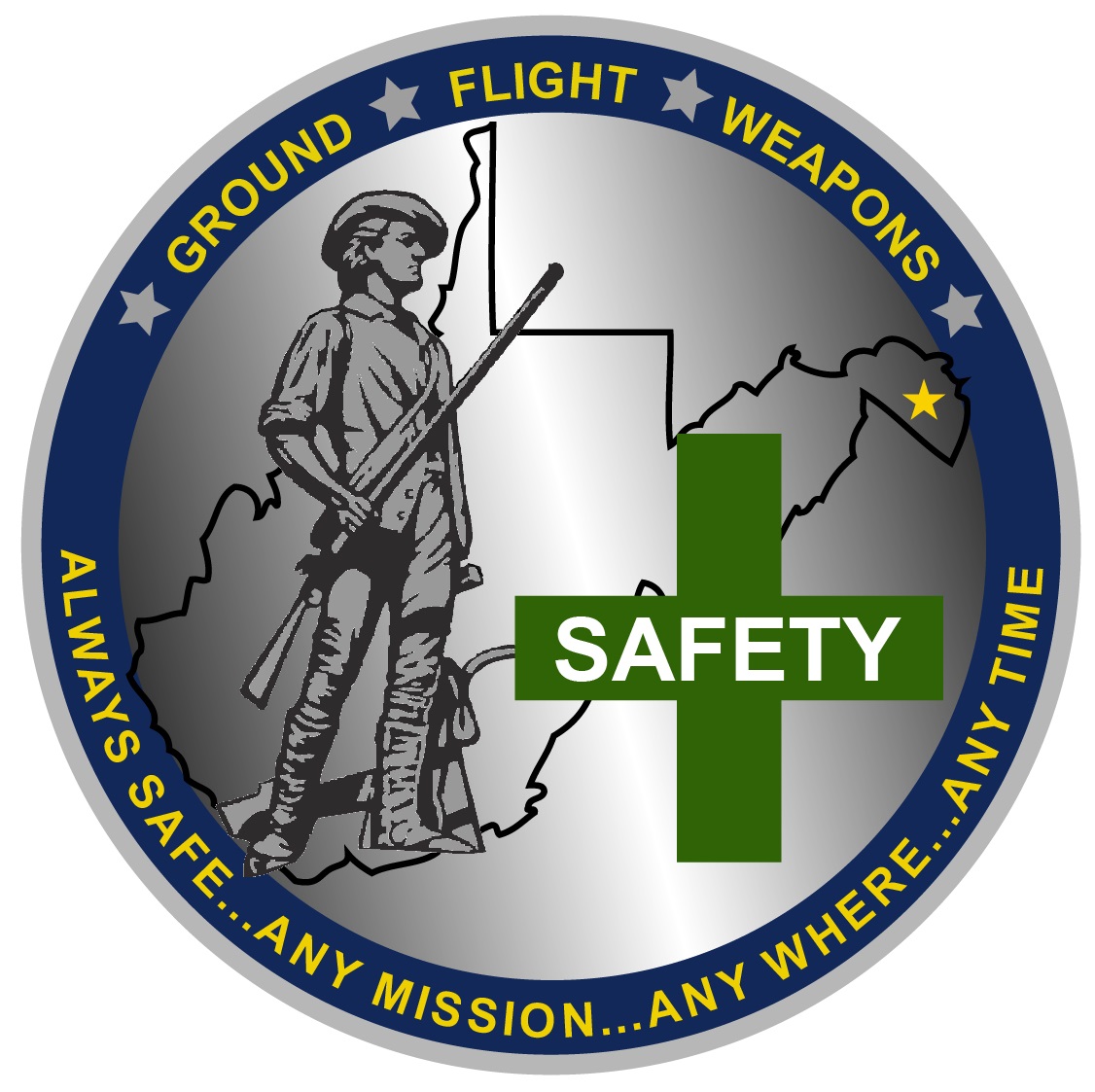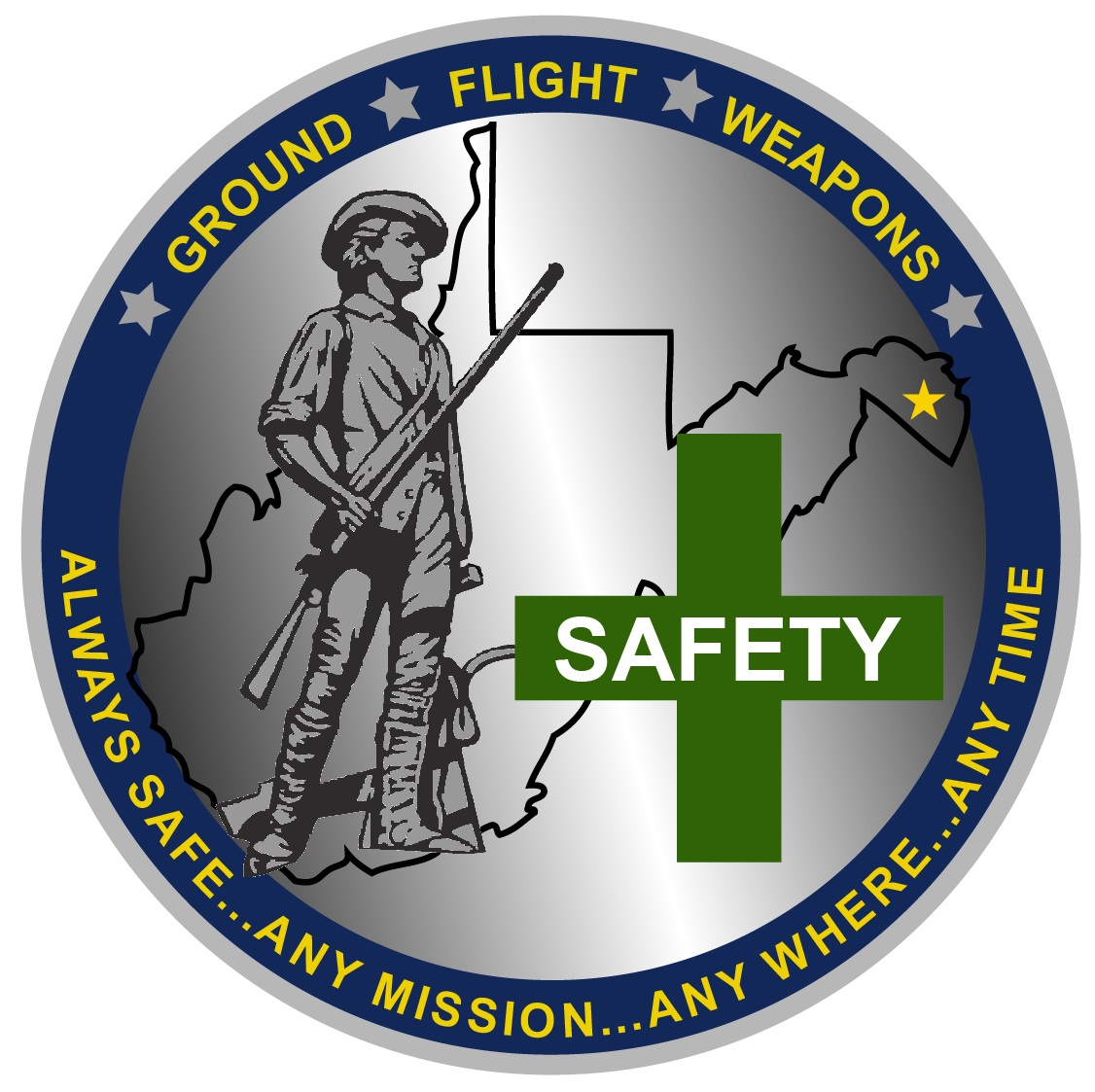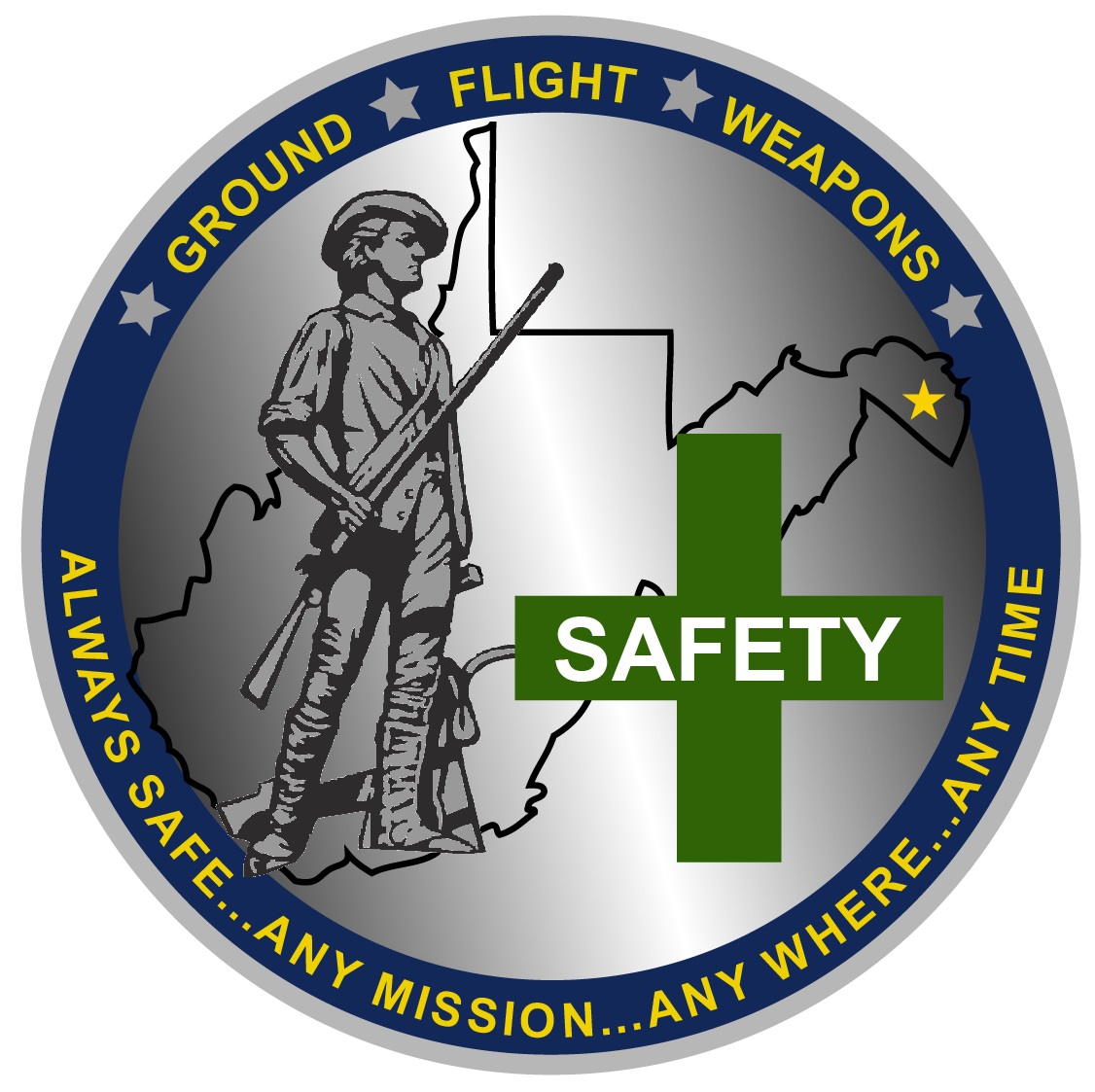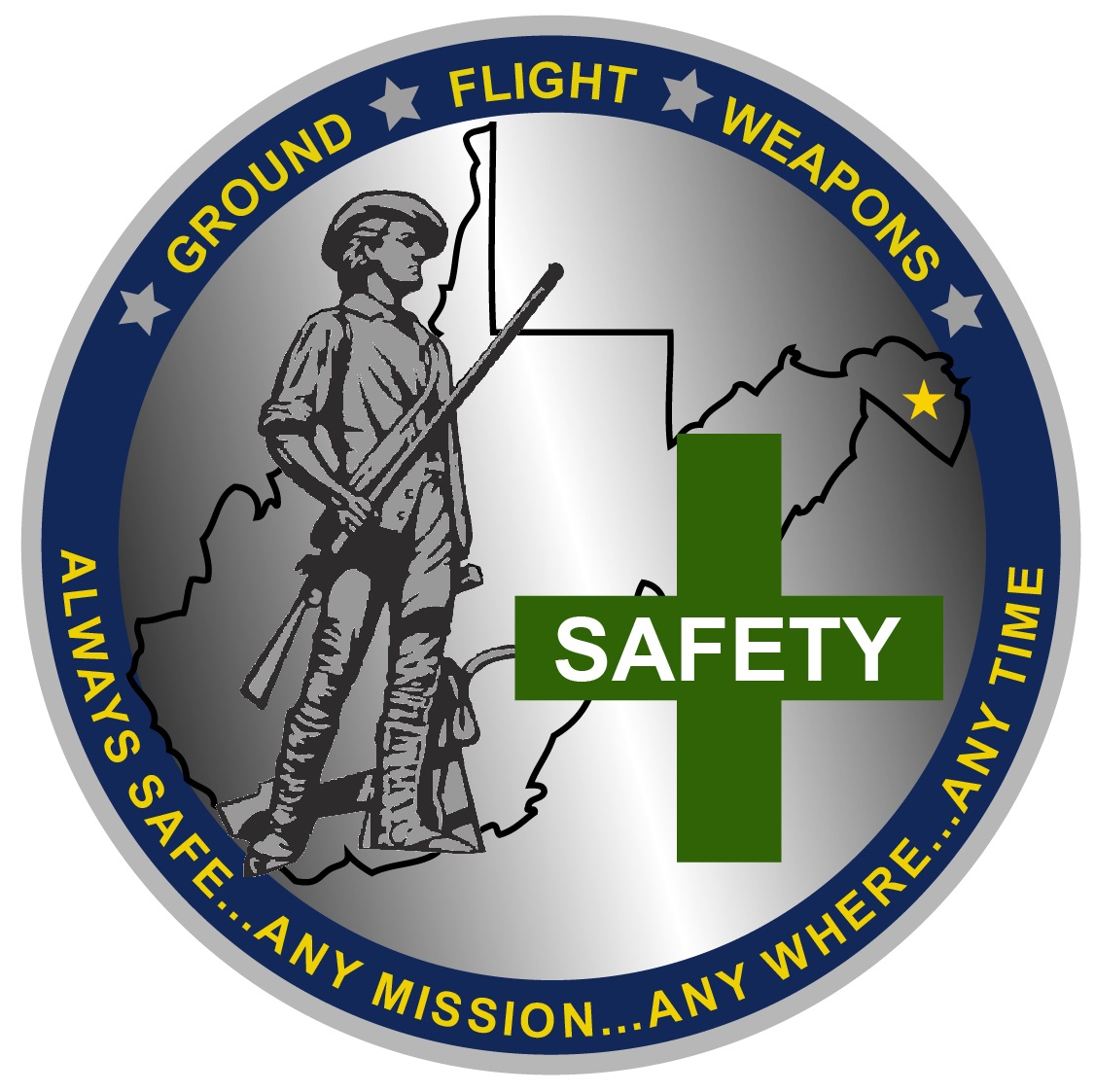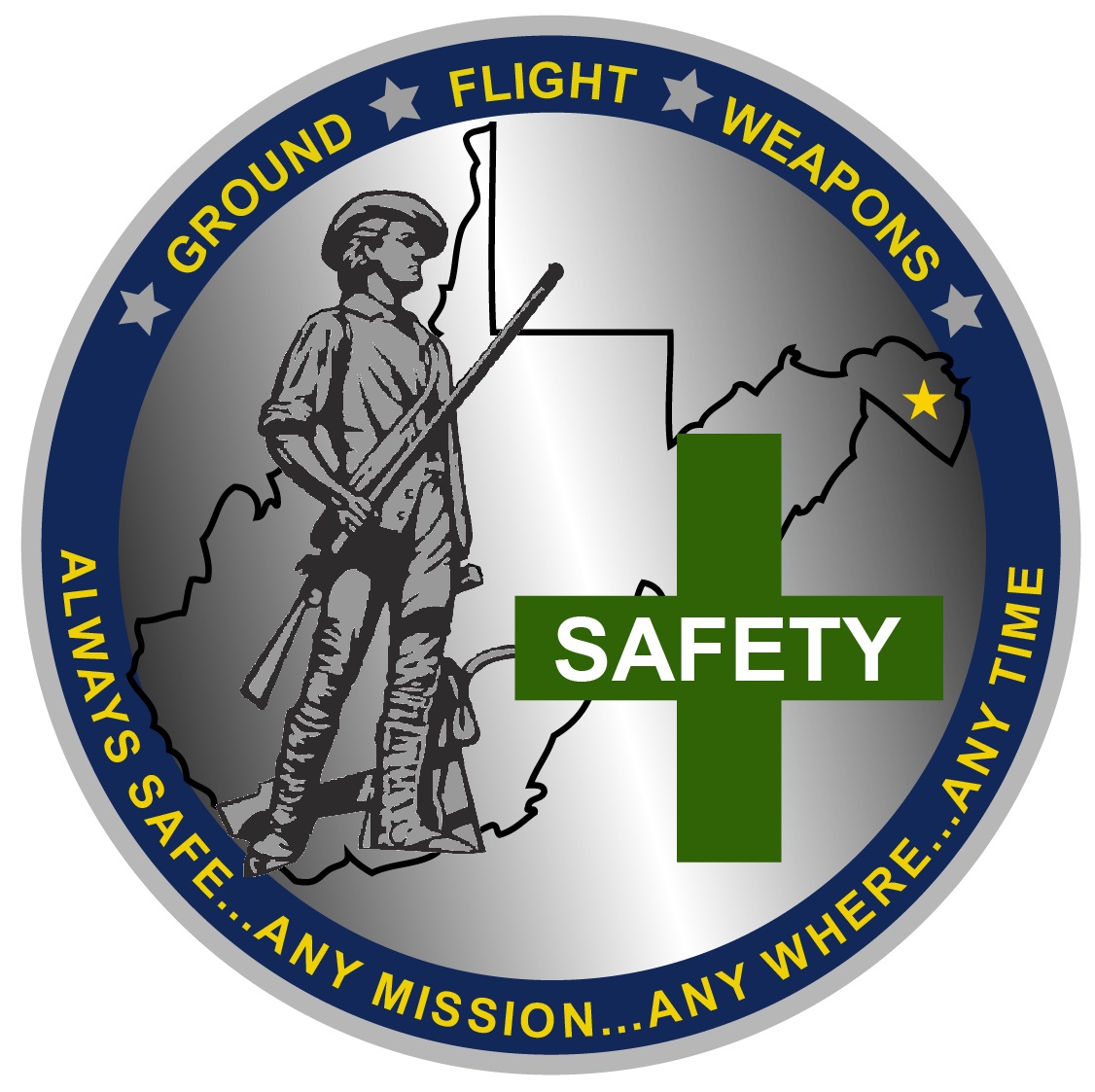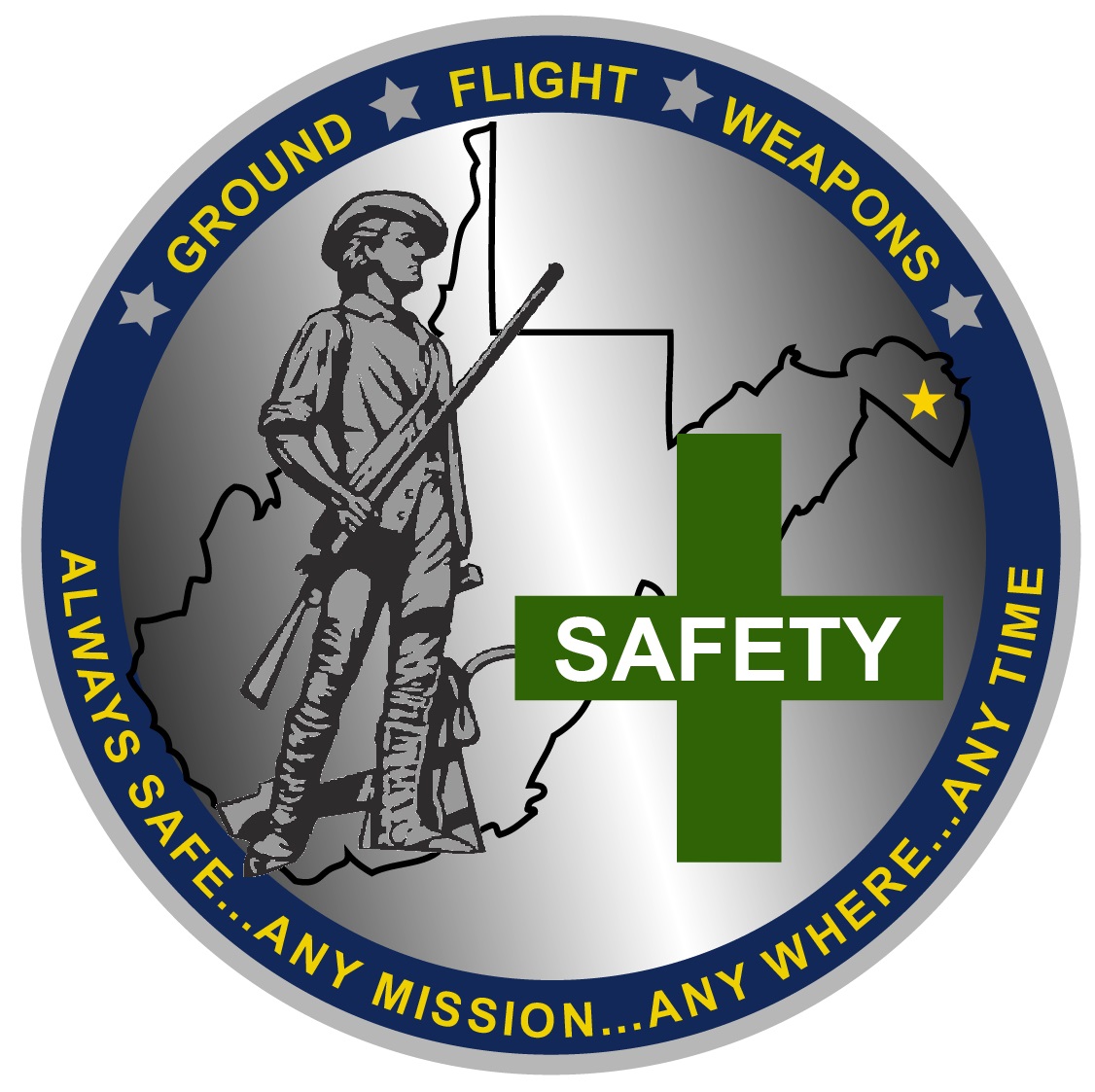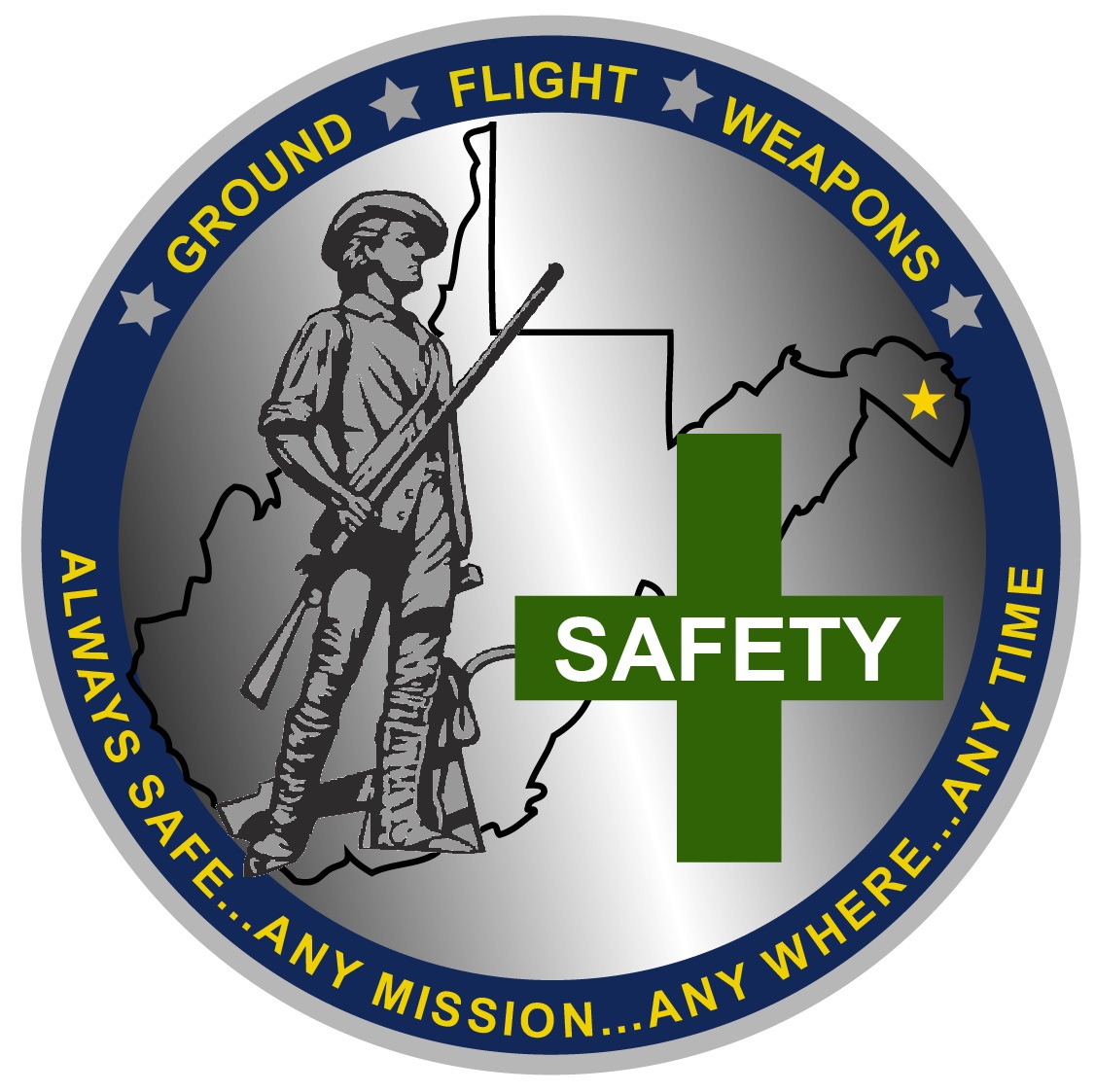Information
-
Audit Title
-
Client / Site
-
Conducted on
-
Prepared by
-
Location
-
Personnel
Program Management
Program Management
-
Does this inspection include Program Management?
Commander & USR Responsibilities
-
APPT LETTERS: Has the commander appointed a primary and alternate Safety Representative to assist them in implementing their Safety Program? AFI 91-202, 1.8.21.2
-
BIO SURVEY: Commander shall ensure all personnel are briefed on the findings and recommendations contained in Bioenvironmental Engineering industrial hygiene surveys and reports. A copy of the survey report will be posted on the work place bulletin board for a period of 10 days after receipt to allow all workers free access to the findings. These reports will be maintained on file in the work place for a minimum of two years. AFI 91-202 para 1.8.21.10
-
TRAINED 60-DAYS: USR will complete initial training within two unit training assemblies of appointment. AFI 91-202 para 2.2
-
RM TRNG: USRs will complete the Air Force Risk Management (RM) Fundamentals course IAW AFI 90-802 requirements. AFI 90-802 para. 11.3.1
-
USR SPOT INSP: USRs shall conduct and document monthly spot inspections in conjunction with facility managers when possible and IAW paragraph 3.5 of this instruction. This will encompass 100% of the workplaces annually. AFI 91-202 para 2.2.2.2.<br>- The activity or work are inspected.<br>- The date and time of the inspection.<br>- The name of the person conducting the spot inspection.<br>- Brief description of the area or hazard.<br>- Applicable RAC, if assigned by Bio, Safety, Fire.<br>- Corrective actions taken or planned.<br>- Follow-up actions every 30 days until closed.
-
SAFETY BRIEFING: USRs shall conduct safety briefings and provide unit personnel with educational safety materials. AFI 91-202 para 2.2.2.5.
-
ADVISE CC: USRs shall advise the commander on safety related matters at least on a quarterly basis or more frequently as necessary and document key elements briefed. AFI 91-202 para 8.5.1.
-
EVALUATE MSR: USRs shall evaluate the unit motorcycle safety program to ensure compliance with AFI 91-207. AFI 91-202 para 8.5.7.
-
ATTEND MTNGs: USRs shall support the installation safety program and attend USR meetings as determined by safety office. AFI 91-202 para 8.5.6.
-
AFVA 91-209: USRs shall post AFVA 91-209, Air Force Occupational Safety and Health Program, on Supervisor's Safety Board. AFI 91-202 para 8.5.7.
Supervisor Responsibilities
-
JSA: Conduct a JSA for each work task not governed by TO or other definitive guidance and anytime a new work task or process is introduced into the workplace to determine potential hazards. AFI 91-202 para 1.8.22.3
-
JSTO: Develop a work center specific Job Safety Training Outline (JSTO) based on Attachment 4, Job Safety Training Outline (JSTO), on safety, fire protection/prevention and health requirements. AFI 91-202 para 1.8.22.5.
-
INITIAL JOB TRNG: Supervisors will provide job safety training to all newly assigned individuals (i.e., PCS, PCA or work center change to include deployment) on the hazards of their job before they start work and immediately when there is a change in equipment, processes or safety, fire and health requirements. AFI 91-202 para 2.3.3.1
-
JSTO reviews will be accomplished by the supervisor and documented with the date of review and the person conducting review. AFI 91-202 para 2.3.3.2.
-
DOC SAFETY TRNG: Document safety, fire and health training as specified in paragraph 1.5.21.4 Documentation will be maintained by the supervisor within the work center. AFI 91-202 para 2.3.3.3.
-
55s OR EQUIVALENT: Method of documentation may include, but are not limited to, the AF Form 55, Employee Safety and Health Record, electronic mediums such as AFFORMs/MAF LOG C2/CAS-B/G081 or locally developed products. If the AF Form 55 is mandated for use as the training documentation device, the entity that mandated the form usage will prescribe the requirement in writing. AFI 91-202 para 1.8.22.5.1.
-
Ensure AF Form 1118, Notice of Hazard, issued by safety, fire protection and Bioenvironmental Engineering officials is posted to alert employees to the hazardous conditions. Ensure any hazards identified by an AF Form 1118 are added to the JSTO and employees are trained on the interim control measures and documented IAW Attachment 5, Section A5.4. AFI 91-202 para 1.8.22.9.
-
Attend Air Force Supervisor Safety Training (SST). AFI 91-202 para 1.8.22.13.
-
SPOT INSPECTIONS: Conduct and document monthly spot inspections of 100% of their work areas annually. 91-202 para 1.8.22.14.<br>- The activity or work are inspected.<br>- The date and time of the inspection.<br>- The name of the person conducting the spot inspection.<br>- Brief description of the area or hazard.<br>- Applicable RAC, if assigned by Bio, Safety, Fire.<br>- Corrective actions taken or planned.<br>- Follow-up actions every 30 days until closed.
Motorcycle Program Management
-
APPT LTR: Commanders shall appoint in writing, at least one MSR, when riders are assigned to the unit, to coordinate the motorcycle safety program. Ensure motorcycle riders in their units are identified to the MSR and required information is provided to populate the MUSTT/Training module database. Units with a limited number of riders may establish a common MSR(s) across multiple organizations. AFI 91-207 para 1.3.4.3.
-
Commanders shall ensure motorcycle riders attend commander’s initial motorcycle safety briefing within 30 duty days of arrival at a new unit assignment, identification as a rider or purchase of a motorcycle. AFI 91-207 para 1.3.4.4.
-
Commanders shall Ensure on-road motorcycle riders attend an annual/pre-season motorcycle riders’ briefing; seasonal considerations will be factored in when scheduling this briefing. AFI 91-207 para 1.3.4.5.
Specialty Vehicle Program
-
Does this unit have a specialty vehicle program?
Tap to enter information
-
Have All Terrain Vehicle operators completed Specialty Vehicle Institute of America's ATV Rider Course? AFI 91-207 para 4.5.8.3.
-
Are operator's of OGMVCs educated on the Wing Commander's RM policy prior to operating? AFI 91-207 para 2.2.5.
Weapons Assessment
Weapons Assessment
-
Does this section have weapons program?
-
Does supervisor conduct spot inspections? AFI 91-202, para. 3.5.
-
Are locally written procedures developed for all explosive operations not covered by Technical Order or other safety briefings? AFMAN 91-201, para. 7.2.<br>
-
Are locally written procedures developed for explosive operations and contain all required elements? AFMAN 91-201, para. 7.3.<br> * Personnel limits, including workers and others.<br> * Explosive limits, including the hazard class, division, and compatibility group of the explosives involved.<br> * Exact locations where operations will be done.<br> * Safety requirements, to include special requirements for personal protective equipment (PPE) and clothing.<br> * Step-by-step procedures for doing the task.<br> * Actions to be taken during an emergency.
-
Has the squadron commander or equivalent approved all locally written instructions pertaining to explosive operations? AFMAN 91-201, para. 7.2.1.1.
-
Are locally written procedures available at the worksite? AFMAN 91-201, para. 7.2.1.3.
-
Do personnel understand the procedures prior to beginning an explosive operation? AFMAN 91-201, para. 7.2.1.5.
-
Are all workers briefed prior to beginning an explosive operation? AFMAN 91-201, para. 7.2.1.5.
-
Are procedures in place to notify the Emergency Communications Center (ECC) each time fire fighting symbols change? AFMAN 91-201, para. 10.7.4.
-
Do written procedures pertaining to training involving blank ammunitions contain all required elements as outlined? AFMAN 91-201, para. 7.25.
-
Are locally written instructions coordinated with the Weapons Safety Office and all other involved organizations? AFMAN 91-201, para. 7.2.1.2.
-
Is initial and (every 15 months) explosives safety training given to all individuals who handle transport maintain, load or dispose of explosives? AFI 91-202, para. 7.2.1.5.
-
Is explosives safety training documented? AFI 91-202, para. 2.3.3.3.
Housekeeping
-
Keep areas where personnel walk and work free of potential tripping and slipping hazards such as tools, electrical cords, air lines and packaging materials. AFI 91-203 para 5.1.
-
Maintain ceilings in good repair and free of loose plaster. Replace damaged, broken or missing fire rated ceiling tiles. Openings in ceilings can delay activation of smoke detectors and sprinkler heads. AFI 91-203 para 5.6.
-
Stacking Materials: AFI 91-203 para 5.7.<br>- Stack materials so they may be easily reached but do not protrude into aisles or passageways.<br>- When materials are stacked to a height less than 15 feet, maintain an 18-inch clearance below ceiling sprinkler deflectors, joists, rafters, beams and roof trusses.<br>- If the stack is over 15 feet in height, increase the clearance to 36 inches.<br>- Position all stacks of materials to ensure an 18-inch clearance around light or heating fixtures, or follow manufacturer‘s instructions, regardless of height.
-
Fluorescent light fixtures without self-locking tubes shall have shields, clamps or other devices installed to keep the tubes from falling out of the fixture. AFI 91-203 para 5.8.
-
Combustible materials shall be placed in covered self-closing metal containers. AFI 91-203 para 5.3.
Fire Protection and Prevention
Commercial Food Service Equipment
-
Does this unit contain commercial food service equipment?
-
Grease filters shall be installed in all grease hoods and extraction systems designed with filters covering equipment. The filters shall be continually maintained in proper operating condition and shall fit properly. AFI 91-203 para 6.2.2.2.1.
-
All installed grease filters and exposed surfaces of hoods shall be thoroughly cleaned daily, or more often if necessary, to prevent grease buildup. AFI 91-203 para 6.2.2.2.2.
-
Hood and exhaust ducts serving food service equipment shall be thoroughly cleaned every 6 months, or more frequently when determined by the installation FES Flight. AFI 91-203 para 6.2.2.2.3.
-
The exhaust system shall continually operate while the food service equipment is in use. If an exhaust fan is shut down or removed for repair or replacement, equipment served by that exhaust system shall not be used until the fan is returned to full service. AFI 91-203 para 6.2.2.2.4.
-
Portable, mobile or temporary food service equipment that uses grease or oil, such as donut machines and deep-fat fryers, shall be located beneath a system complying with paragraph 6.2.2.2 or have an integral grease removal and fire suppression listed by a NRTL IAW NSF/ANSI Standard 4: Commercial Cooking, Rethermalization and Powered Hot Food Holding, and Transport. AFI 91-203 para 6.2.2.2.5.
Extinguishers
-
Managers and supervisors at all levels shall ensure a visual inspection of fire extinguishers are performed at a minimum of 30-day intervals and documented for all fire extinguishers under their control. AFI 91-203 para 6.2.4.7.
-
Be hydrostatically tested. Fire extinguishers shall be hydrostatically tested every five years IAW NFPA 10. AFI 91-203 para 25.5.2.6.
Electrical
-
Are space heaters approved by local fire protection office, 36 inches from combustibles, unplugged when unattended, and plugged directly into wall receptacle? AFI 91-203 para 6.2.10.3.
-
Coffee Makers: AFI 91-203 para 6.2.11.<br>- Keep coffee makers and the area around them free of combustibles.<br>- Refer to the manufacturer‘s operating instructions and consult the facility manager for approval after coffee makers placement.<br>- Unplug coffee makers at the end of the day.
Exit/Egress
-
Exit sign: The illuminated surface value of the exit sign should have a value of not less than five foot-candles. 29 CFR 1910.37 ( b )( 6 )
-
Exit signs shall be clearly visible from all directions of egress and shall not be obstructed at any time. If occupancy is permitted at night, or if normal lighting levels are reduced at times during working hours, exit signs shall be suitably illuminated by a reliable light source. New exit signs shall be the internally illuminated, light emitting diode (LED) type. Existing signs may be internally or externally illuminated. AFI 91-203 para 25.4.9.5.
-
Monthly testing of exit lights shall be accomplished IAW NFPA 101, The Life Safety Code. AFI 91-203 para 25.4.9.10.
-
Floors or means of egress shall be illuminated to at least one (1) foot-candle (measured at all points at the floor), including angles and intersections of corridors and passageways, stairways, landings of stairs and exit doors. AFI 91-203 para 6.3.8.
-
Fire exits shall be clearly marked and exit paths shall be kept clear of equipment and materials, emergency lighting shall be provided and all workers trained in proper evacuation procedures. AFI 91-203 para 6.3.2.
-
Doors, passageways or stairways which are neither exits nor ways to an exit but may be mistaken for an exit, shall be clearly marked ―NOT AN EXIT or a sign indicating their actual use; for example, ―STORAGE ROOM or ―BASEMENT. AFI 91-203 para 6.3.3.
-
Ensure escape routes are kept free of obstruction—to include stairways and office doors. Ensure doors leading outside open easily. AFI 91-203 para 6.2.15.2.
-
Aisles shall be at least 36 inches wide to permit free movement of workers, equipment and supplies. A minimum of 18 inches shall be provided for passageways formed by or between movable obstructions. Refer to NFPA 101 and UFC 3-600-01 for additional information. AFI 91-203 para 7.2.1.1.4.
Fire Doors
-
Self-closing Doors: An exit is permitted to have only those openings necessary to allow access to the exit from occupied areas of the workplace, or to the exit discharge. An opening into an exit must be protected by a self-closing fire door that remains closed or automatically closes in an emergency upon the sounding of a fire alarm or employee alarm. 29 CFR 1910.36(a)(3)
-
No lock or fastening device shall prevent escape from inside the building. AFI 91-203 para 6.3.6. <br>29 CFR 1910.36(d)(1) Employees must be able to open an exit route door from the inside at all times without keys, tools, or special knowledge. A device such as a panic bar that locks only from the outside is permitted on exit discharge doors.
-
The door that connects any room to an exit route must swing out in the direction of exit travel if the room is designed to be occupied by more than 50 people or if the room is a high hazard area (i.e., contains contents that are likely to burn with extreme rapidity or explode). CFR 1910.36(e)(2)
Walking Surfaces, Ladders, Stairs
Required Clearance
-
Aisles shall be at least 36 inches wide to permit free movement of workers, equipment and supplies. A minimum of 18 inches shall be provided for passageways formed by or between movable obstructions. AFI 91-203 para 7.2.1.1.4.
-
Sufficient access and working space shall be provided and maintained around all electrical equipment. AFI 91-203 para 7.2.1.1.5.
Floors
-
Floors, aisles and passageways shall be kept clear and in good repair, with no obstructions, free of defects that can endanger workers or interfere with handling of materials, or hinder people leaving during emergencies. AFI 91-203 para 7.2.1.2.
-
Supervisors shall ensure equipment weight and distribution comply with maximum floor loading capacity for all above grade storage areas (including areas above basements). AFI 91-203 para 7.2.1.3.
-
Guards for Floor and Wall Openings. Every floor opening, such as a hatchway, chute, pit, trap door, manhole and ladderway, shall be guarded. AFI 91-203 para 7.2.1.6.
-
All open-sided floors, platforms and runways four (4) feet or more above the ground or floor shall be guarded by a standard railing on all open sides, except at ramp entrance to a ramp, stairway or fixed ladder. AFI 91-203 para 7.2.1.7.3.
-
Dock surfaces shall be smooth and even. Where necessary, aisleways shall be marked. Edges of docks shall be marked with four-inch wide yellow lines when there is a chance of workers falling. Where the potential for serious injury exists, removable railings shall be used. AFI 91-203 para 7.2.2.1.1.
Fluorescent Light Bulb Disposal
-
All fluorescent light bulbs contain toxic materials and shall be managed IAW local disposal criteria for hazardous waste. AFI 91-203 para 7.2.1.5.
Fixed Stairs/Ramps
-
Does this unit have fixed industrial stair and ramps?
-
Every flight of fixed industrial stairs with four (4) or more risers shall have standard guardrails or standard handrails as called for below. The width of the stair shall be measured clear of all obstructions except handrails. AFI 91-203 para 7.3.2.12.1.
-
Stairs less than 44 inches wide with both sides enclosed shall have at least one handrail, preferably on the right side going down. AFI 91-203 para 7.3.2.12.1.1.
-
Stairs 88 inches or more wide shall have one handrail on each enclosed side, one guardrail on each open side and one intermediate guardrail built midway of the width. AFI 91-203 para 7.3.2.12.1.5.
-
Illumination. Stairs and ramps shall be lighted so all treads and landings are visible. AFI 91-203 para 7.3.2.13.
-
Vertical Clearance. Where there is less than seven (7) feet of headroom over stairs, obstructions shall be padded. When they cannot be padded, obstructions shall be color coded yellow or yellow-and-black stripes to highlight the hazards. In all cases, caution signs shall be used to warn people of low clearances. AFI 91-203 para 7.3.2.7.
-
Treads. All treads shall be slip-resistant and free of projections or lips that could cause a tripping hazard. AFI 91-203 para 7.3.2.9.
Fixed Ladders
-
Does this unit have fixed ladders?
-
Length. Ladders 20 feet or less shall be of a continuous length. AFI 91-203 para 7.4.2.2.1.
-
Landing Platforms. A landing platform is provided for a person to rest or gain access to another section of the ladder. Platforms shall be provided every 30 feet or fraction thereof. Where no cage, well or ladder safety device is provided, landing platforms shall be provided for each 20 feet of height or fraction thereof. AFI 91-203 para 7.4.2.2.1.1.
-
Where unauthorized use of a fixed ladder is a problem, the facility manager or security department shall ensure the ladders are secured from unauthorized access. Ladders available to public access require guarding to prevent unauthorized access. Typically, the bottom seven (7) feet shall be guarded. AFI 91-203 para 7.4.2.6.
-
A formal, fully documented inspection of all fixed ladders shall be accomplished upon installation and at least every three (3) years thereafter. These inspections shall be performed by the installation CE for ladders installed on real property facilities or real property installed equipment (RPIE). AFI 91-203 para 7.4.3.1.
Portable Ladders
-
Does the unit have portable ladders?
-
Store ladders in a way that provides easy access for inspection and permits safe withdrawal for use. When possible, store ladders on racks. Ensure the racks have enough supporting points to keep the ladders from sagging. AFI 91-203 7.5.2.5.3.
-
Are wood ladders not painted with an opaque coating, avoiding a cover-up of possible defects? AFI 91-203 para. 7.5.2.3.4
-
Personnel who use ladders at any working height shall be adequately trained in the care and use of different types of ladders. The Supervisor or a designated trainer shall conduct this training when a worker is first assigned. AFI 91-203 para. 7.5.2.7.
Electrical Safety
Common Electrical Findings
-
Are electrical receptacles and cover plates damaged or unserviceable? Receptacle covers with cracks which expose the interior of the receptacle shall be replaced. AFI 91-203 para 8.2.
-
Are multiple plug adapters being utilized to provide additional or more convenient outlets as this could overload electrical circuits? At no time shall a multiple plug adapter or strip be plugged into another multiple plug adapter or strip. AFI 91-203 para 8.2.1.
-
High wattage appliances such as heat-producing appliances, refrigerators of all types, coffee makers, etc., shall be plugged directly into a facility outlet. AFI 91-203 para 8.4.7.
-
Multi-receptacle surge protectors shall only be used to power computers and related equipment such as lights or fans. Surge protectors nor extension cords shall be used with high current items such as coffee makers, refrigerators, microwave ovens, heaters, food preparation equipment, etc. AFI 91-203 para 8.4.8.
-
Unless their purpose is evident, circuit breakers and fuse boxes shall be specifically and legibly marked to indicate their purpose. For example, markings should not merely indicate “motor” or “lights,” but “motor, water pump #2” or “lights, front lobby.” AFI 91-203 para 8.5.
-
Circuit breakers, disconnect switches and fuses shall be readily accessible to workers and building management personnel. Work space in front shall be clear and unimpeded and shall not be located where exposed to physical damage or in the vicinity of easily ignitable material. AFI 91-203 para 8.5.2.
-
Circuit breakers shall not be taped in the ―on position. Breakers that trip frequently indicate electrical problems and shall be promptly reported and corrected. AFI 91-203 para 8.5.3.
-
Guarding of Live Parts. Electrical outlets, switches, junction boxes, etc., shall be in good condition and have cover plates securely installed. AFI 91-203 para 8.6.
-
Undervoltage Protection. Machines not adequately safeguarded to protect workers during undervoltage situations shall have an undervoltage protective device installed. AFI 91-203 para 8.16.
Extension Cords & Flexible Cords
-
Are cracked or frayed electrical extension cords, loose or broken electrical wires and worn or broken electrical plugs being utilized in work center? AFI 91-203 para 8.4.1.2.
-
Are electrical extension cords being used as a substitute for fixed wiring. AFI 91-203 para 8.4.1.3.
-
Are cords routed cords through holes in walls, ceilings, floors, doorways, windows, etc. AFI 91-203 para 8.4.1.4.
-
Are cords taped, stapled or tacked to building surfaces. AFI 91-203 para 8.4.1.6.
-
Are approved covers utilized to protect electrical extension cords from being walked on or equipment allowed to run over them. AFI 91-203 para 8.4.1.8.
-
Are cords allowed to be relaxed while in use, not be kinked, stretched or bent excessively to prevent internal wire damage. AFI 91-203 para 8.4.1.9.
-
Are cords placed under rugs, carpets or other combustible material. AFI 91-203 para 8.4.1.16.
Electrical Worker Safety
-
Does this unit have authorized electrical workers?
-
Personnel shall not hold meters in their hand while performing measurements on energized circuits or equipment. Use non-conductive, insulated gloves or other effective PPE when necessary to hold meters or metering cables. AFI 91-203 para 8.11.3.
-
Insulating matting shall be used near electrical apparatus or circuits in high voltage maintenance areas as an additional safety measure to protect personnel. It shall be used to protect against accidental shock only and shall not be the only means of protection when handling energized wires and circuits. AFI 91-203 para 8.11.5.1.
-
Insulating matting shall be replaced when worn to one-half its original thickness or the manufacturer‘s recommended replacement requirements. AFI 91-203 para 8.11.5.4.
-
Insulating matting in front of and around electrical workbenches, high voltage cabinets, switch panels, etc., shall be one continuous length or strip. Where possible, matting shall continue 24 inches beyond the end of the equipment. AFI 91-203 para 8.11.5.5.
-
Are electrical circuits and equipment being de-energized before being worked on. When authorized by the commander, applicable technical data or manufacturer‘s instructions, work may be performed on energized circuits and equipment as necessary to support a critical mission, prevent injury to personnel or to protect property. AFI 91-203 para 8.18.1.
-
Arc flash protection shall be provided for all Air Force operations exposing personnel to energized parts greater than 50 volts. Protective clothing required, if any, shall be based on the procedures outlined in UFC 3-560-01 and AFI 32-1064. AFI 91-203 para 8.18.2.3.
-
A flash hazard analysis (FHA) shall be performed for all Air Force operations exposing personnel to energized parts greater than 50 volts. Protective clothing required, if any, shall be based on the FHA performed. Procedures outlined in UFC 3-560-01 and AFI 32-1064 shall be followed. AFI 91-203 para 8.18.2.3.
-
Individuals required to work on or near (within 8 feet of) exposed energized equipment over 50 volts shall wear long sleeved, Arc Thermal Performance Value (ATPV) rated PPE IAW UFC 3-560-01. Long sleeves/outer garments shall be rolled down and buttoned or secured. AFI 91-203 para 8.18.2.4.
Office Safety
-
Are all floor areas kept clean, dry and free of refuse? AFI 91-203 para 10.2.2.1
-
Are telephone and electrical cords located where they do not pose a tripping hazard? AFI 91-203 para 10.2.2.1
-
Are all defects, such as floor tiles, broken steps, torn carpet or curled mats identified until repaired or replaced? AFI 91-203 para 10.2.2.2
-
Are office ergonomics considered when attempting to fit the job to the person? AFI 91-203 para 10.3
-
Are heavy materials stored in the bottom of file cabinets? AFI 91-203 para 10.5.5.1
Hand & Portable Power Tools
-
Does this unit have hand or portable power tools?
General Information
-
Are workers well trained and familiar with the operation of the tool and the characteristics of the materials involved before being permitted to operate power-actuated tools? AFI 91-203 para 12.6.3.1
-
Do operators wear protective goggles or face shields and other protective equipment, such as a respirator, when operations require it? AFI 91-203 para 12.7.2
Portable Power Tools
-
Are tools inspected for defects, and defective tools immediately removed from service? AFI 91-203 para 12.3.5
-
Are power tools unplugged and properly stored when not in use? AFI 91-203 para 12.3.1
-
Are portable electric tools with exposed metal parts properly grounded or double insulated? AFI 91-203 para 12.5.4
-
Are all portable circular saws with a blade diameter over two (2) inches equipped with guards above and below the base plate shoe? AFI 91-203 para 12.6.1
-
Do workers who operate chain saws wear safety footwear, snug-fitting clothing, protective gloves and eye, hearing and head protection? AFI 91-203 para 12.6.2.2
Fall Protection
-
Does this unit require a fall protection program?
Training/General Information
-
Is recurring fall protection training conducted annually, when work conditions change or when new fall protection/fall arrest systems are procured? AFI 91-203 para 13.6
-
Is a rescue plan included in each fall protection plan to assure prompt rescue of fallen workers? AFI 91-203 para 13.7
-
Are workers provided fall protection when exposed to falls of four (4) feet or more? AFI 91-203 para 13.2.2
-
Are active and passive means of fall protection considered before using procedural controls? AFI 91-203 para 13.3.1.3
-
Has a JSA been performed and coordinated with the installation safety office prior to the use of procedural controls for protecting workers from falls? AFI 91-203 para 13.3.1.3
PFAS
-
Are all PFAS components marked to indicate compliance with ANSI Z359.14.? AFI 91-203 para 13.4.6.2
-
Can anchorage connectors withstand a 5000 pound load for each PFAS connected? AFI 91-203 para 13.4.6.7
-
Are wire rope, rope covered wire lanyards, plastics (such as nylon) and wet lanyards prohibited where an electrical hazard may be present? AFI 91-203 para 13.4.6.5
-
Do workers inspect their PFAS prior to each use for mildew, wear, damage and other deterioration? AFI 91-203 para 13.4.6.10.2
-
Does the supervisor ensure all PFAS components receive a thorough inspection at least quarterly and keep the record of inspection for at least one year? AFI 91-203 para 13.4.6.10.3
Aircraft Specific Fall Protection
-
Mobile Work Platforms. Mobile work platforms (vehicle-mounted elevating and rotating work platforms, manually propelled maintenance stands and self-propelled mobile work platforms and scaffolds) shall have protective guardrails, midrails and toe boards (or equivalent) installed on all open sides, except the side facing the aircraft when it is within 14 inches of the working surface, unless workers are protected by a PFAS. AFI 91-203 para 24.16.6.
Roofing Activities
-
Workers engaged in roofing activities on low-slope roofs (a roof having a slope less than or equal to 4 in 12 [vertical to horizontal]), with unprotected sides and edges 4 feet or more above lower levels shall be protected from falling by guardrail systems, safety net systems, PFAS or a combination of warning line system and guardrail system, warning line system and safety net system, warning line system and PFAS, or warning line system and safety monitoring system. AFI 91-203 para 25.13.5.4.
PPE
Eye/Face Protection
-
Does this unit use eye/face protection?
-
Protective equipment must meet the following minimum requirements: AFI 91-203 para 14.4.2.1.<br>- Provide adequate protection against the particular hazards for which they are designed.<br>- Be reasonably comfortable when worn under designated conditions.<br>- Fit snugly without interfering with movement or vision of wearer.<br>- Be durable.<br>- Be capable of being disinfected (unless disposable items are used).<br>- Be easily cleaned.<br>- Be kept clean and in good repair.
-
Eye and face protection must have the manufacturer‘s identification clearly marked on the equipment. Manufacturers must meet the ANZI/SEA Z87.1 requirements. AFI 91-203 para 14.4.2.3.
-
Face shields shall only be used as secondary eye and face protection in areas where splashing, rather than hazardous impact, is the problem. In the case of primary protection, other protective devices such as safety goggles shall be worn. Refer to 29 CFR 1910.133., for additional information. AFI 91-203 para 14.4.2.12.
Hearing Protection
-
Does this unit use hearing protection?
-
Mark “hazardous noise areas” and “equipment” (as identified by BE) with signs and/or decals. For potentially hazardous noise areas, signs will be located at their entrances or boundaries, including pathways leading to hazardous noise areas. AFI 48-127 para. 2.12.3.
-
Conduct initial and annual workplace-specific hearing conservation training on shop or unit hazardous noise exposures and equipment. Consult PH for training materials. Document all training on the worker’s AF Form 55, Record of Training, or equivalent. AFI 48-127 para 2.12.10.
-
Personal hearing protectors are provided at no cost to all AF personnel who work in designated hazardous noise areas or operate noise-hazardous equipment. AFI 48-127 para. A4.2
Machinery
-
Does this unit have machinery?
Fixed Grinding Machines
-
Peripheral protectors, commonly referred to as tongue guards, shall be positioned so the opening between the wheel and the guard is no more than 1/4 inch. AFI 91-203 para 18.6.2.3.2.
-
Work Rest: Adjust these devices closely to the wheel with a maximum opening of 1/8 inch to prevent the work being jammed between the wheel and rest. AFI 91-203 para 18.6.2.3.3.1.
-
Before mounting grinding wheels, are grinding wheels inspected utilizing the ring test method? 29CFR 1910.215(d)(1).
-
Abrasive grinding wheels shall not be used to grind aluminum, brass, copper or other soft metals unless the wheel is specifically designed for that purpose. Soft metal wheels shall be used to grind soft metals only. AFI 91-203 para 18.6.2.3.8.
-
Special Grinding Operations. Grinding materials such as magnesium, titanium, thorium and beryllium present fire and health hazards. Supervisors of these operations shall contact the installation Ground Safety office, Fire Emergency Services (FES) Flight and BE for assistance in determining safe work practices and protective equipment needs. AFI 91-203 para 18.6.2.10.
-
Installation. Machines designed for fixed locations or that may tip over shall be securely fastened to the floor or other suitable foundation to eliminate all movement or walking. AFI 91-203 para 18.3.2.
General Safety
-
One or more methods of machine guarding shall be provided to protect the operator and other employees or patrons in the machine area from hazards such as those created by point of operation, in-running nip points, rotating parts, flying chips, power transmission apparatus and sparks. AFI 91-203 para 18.3.4.3.
-
The motor START switch shall be protected against accidental or inadvertent operation. AFI 91-203 para 18.4.2.11.1.
-
All machines shall incorporate one or more emergency stop controls that, upon momentary operation, shall de-energize all machine motions. AFI 91-203 para 18.5.2.18.
Marking of Work Area
-
Equipment and machinery shall be arranged to permit an even flow of materials. When marking is used, yellow or yellow and black hash marked lines, 2 to 3 inches wide, shall be used. Machines designed for fixed locations and those with shock-mounting pads shall be securely anchored and installed IAW manufacturer‘s instructions. AFI 91-203 para 25.4.1.1.
-
Passageways and aisles shall be provided and marked to permit the free movement of employees bringing and removing material from the shop. These passageways are independent of clear zones and storage spaces. They shall be clearly recognizable. Floor markings should provide a contrast to the floor color, such as yellow lines 2 to 3 inches wide on a gray floor. AFI 91-203 para 25.4.1.2.
Ventilation
-
Application. Machines that develop fine dust or other airborne contaminants shall be equipped with effective industrial exhaust ventilation. In shops where small numbers of installed machines are not continuously in operation, portable collection systems may be used. AFI 91-203 para 25.13.3.2.
Emergency Shower & Eyewash Units
-
Does this unit have emergency shower or eyewash units?
-
Permanently-installed units: AFI 91-203 para 19.6.<br>- Travel distances to eyewash stations shall not exceed 100 feet and shall not take more than 10 seconds to reach.<br>- Workers should not have to open any doors or use any stairs to reach the station.<br>- Placement of the unit shall be in a central location where the need is the greatest.<br>- Units shall be connected to a supply of water free from contamination and equal in purity to potable water.<br>- Water temperature shall be between 60° F and 100° F.<br>- Fixed locations shall be identified with a highly visible sign.
Testing/Inspection
-
Permanently-installed shower and eyewash units shall be activated by the supervisor or worker weekly to verify proper operation. AFI 91-203 para 19.9.1.
-
Self-contained units shall be tested and inspected IAW the manufacturer‘s instructions. Where tap water is used, fluid shall be replaced at least monthly. AFI 91-203 para 19.9.3.
Self-Contained Units
-
Is the self-contained unit being used appropriately? AFI 91-203 para 19.4.3.<br>- As an interim fix, pending installation or repair of a permanently-installed unit.<br>- For workers exposed to irritants rather than substances that could damage the eye.<br>- In temporary locations where a permanent installation would not be economically feasible or may not be possible.<br>- In field operations, such as remote missile or communications sites, where a source of potable water is not available.
Eyewash Bottles
-
Are eyewash bottles being used appropriately? AFI 91-203 para 19.4.4.<br>- Eyewash bottles are not a replacement for other type units.<br>- An eyewash bottle may be kept in the immediate vicinity where employees are working on extremely hazardous operations.<br>- These units supply immediate flushing after which the individual may then proceed or be helped to a permanently-installed or self-contained unit to flush the eyes more thoroughly.
Location
-
Are the eyewash/showers in a proper location? AFI 91-203 para 19.5.<br>- They shall be in conspicuously identified and accessible locations.<br>- No more than 10 seconds to reach and free of obstructions that may inhibit immediate use of the equipment.<br>- The unit shall be located as close to the hazard as possible without physically causing a hazard itself.<br>- Energized circuits located within two (2) feet of emergency eyewash stations and within five (5) feet of emergency shower stations shall be protected by ground fault circuit interrupters (GFCI).
Flammables and Combustibles
-
Does this unit store and/or use flammables/combustibles?
Flammable Cabinets
-
The combined quantity of Class I and Class II liquids in a cabinet shall not exceed 60 gallons per cabinet, and the total quantities of all liquids shall not exceed 120 gallons. AFI 91-203 22.5.3 & Uniform Fire Code 79.202 (c)(2)
-
Cabinets shall be conspicuously labeled in red letter on contrasting background FLAMMABLE--KEEP AWAY. AFI 91-203 para. 22.5.3.2 & Uniform Fire Code 79.202(c)(3)(a)
-
Doors shall be well fitted, self-closing and equipped with a latch. AFI 22.5.3.4.2 & Uniform Fire Code 79.202 (c)(3)(b)
-
The bottom of the cabinet shall be liquid-tight to a height of at least 2 inches. AFI 91-203 para 22.5.3.4.2 & Uniform Fire Code 79.202 (c)(3)(c)
-
Functional Managers and/or Supervisors shall ensure:<br>- All workers and handlers of flammable or combustibles have accomplished appropriate training associated with tasks and hazards related to the work environment.<br>- Personnel handling, storing or using hazardous materials are trained IAW AFI 90-821.<br>- Individuals involved in dispensing of flammable or combustible liquids are instructed on hazards of static electricity.<br>- Workers handling and storing flammable or combustible liquids are trained in fire prevention and protection as it relates to their duties.<br>- Appropriate spill and containment control materials are readily available at storage or dispensing areas.<br>- PPE is available and appropriately worn when handling flammable or combustible liquids.<br>AFI 91-203 para 22.4.1.6.
Lock-out Tag-out (LOTO)
-
Does this Unit have a LOTO program?
-
Recurring LOTO training shall be performed at least annually. The training shall establish employee proficiency, include an in-depth review of current and previous procedures and introduce new or revised control methods and procedures, as necessary. AFI 91-203 para 21.5.3.
-
Annual Inspection. Functional managers and commanders shall ensure annual inspections of LOTO procedures within their organization are conducted by an individual above the shop level supervisor. A qualified ground safety inspector shall review LOTO inspection reports during organization safety inspections to ensure compliance. AFI 91-203 para 21.6.2.<br>Minimum Requirements:<br>- Review of LOTO procedures with authorized workers.<br>- Observation of LOTO procedures to ensure workers understand and follow procedures.<br>- Review of training and self-assessment documentation to ensure LOTO requirements are met.<br>- Out-brief of shop or unit supervisor or, as appropriate, documented in the written report.
-
Tagout devices shall: <br>- Be constructed and printed so they do not deteriorate or become illegible, especially in wet or corrosive environments. Laminated devices (tags) are acceptable.<br>- Warn against hazardous conditions if equipment or machinery is energized.<br>- Clearly identify the worker who applies them.<br>- Be secured with a self-locking, non-reusable and non-releasable attachment, such as a nylon or plastic cable tie, with a minimum unlocking strength of 50 pounds.<br>AFI 91-203 para 21.3.3.6.
-
Supervisors shall determine if Service/Administrative locks and tags are appropriate for the hazard level shall be used to lock equipment that will not be repaired or serviced immediately. AFI 91-203 para 21.3.4.3.
-
Supervisors shall generate and maintain equipment-specific written LOTO procedures, i.e., a LOTO section of Safety SharePoint. AFI 91-203 para 21.3.5.1.
-
Supervisors shall perform a self-assessment of work environments using these procedures at least annually. AFI 91-203 para 21.3.5.2. & 21.6.1.
-
Supervisors shall assign and document worker LOTO authorization. AFI 91-203 Para 21.3.5.5.
-
Supervisors shall keep accurate LOTO logs. AFI 91-203 Para 21.3.5.7.
-
Does the LOTO program follow the Nine Step LOTO Process? AFI 91-203 para Para 21.4.2.
-
Does the LOTO program follow the three Step Release from Lockout/Tagout Process? AFI 91-203 Para 21.4.5.
-
Service/Administrative locks and tags shall be clearly distinguishable from locks and tags used for lockout/tagout. AFI 91-203 para 21.4.9.1.1.1.
Aircraft Flight Line - Ground Ops
-
Does this unit have flight line ops?
Typical Shop Safety
-
Cardiopulmonary Resuscitation (CPR)/Self-Aid Buddy Care (SABC). Aircraft maintenance and support shop workers exposed to electrical hazards from energized aircraft electrical systems, aircraft components or aircraft equipment shall be provided CPR and SABC training. AFI 91-203 para 24.2.3.
-
Compressed air shall not be used for cleaning purposes except when regulated to 30 psi or less, and then only when effective chip guarding, air diffuser, and face shield and safety goggles are used. AFI 91-203 para 24.2.5.1.
-
Machine Safeguarding and Shop Layout. Machinery shall be procured with built-in safeguards for operator protection without interfering with normal equipment operation. Suitable enclosures or barricades shall be installed on unguarded machinery or power-transmission equipment. Firmly secure machines and equipment to floors, bases or stands located so the operator need not stand in an aisle. AFI 91-203 para 24.15.1.1.
Tire Mounting and Servicing
-
Maintenance workers shall use tire dollies or mechanical devices when mounting, servicing or removing heavy aircraft tires. AFI 91-203 para 24.12.1.
-
Tire cages shall be used when inflating tires in the shop to prevent injury to workers. Extreme caution shall be used to avoid over-inflating tires. Nitrogen or dry air supply lines shall be equipped with regulators to prevent over pressurizing the tire. AFI 91-203 para 24.12.2.
Aircraft Hangar Operations
-
Does this unit have aircraft hangar operations?
-
Does this unit have powered hangar doors?
-
Door Controls:<br>- Controls shall be installed where they prevent the operator entering hazardous areas and shall provide the operator a clear view of door travel.<br>- The door shall stop movement if the operator removes pressure on the door switch.<br>- For all center door switch operations, the word "OPEN" shall be placed at the top position and the switches shall be wired so the doors open when "OPEN" is selected.<br>- A hinged cover or other device shall be installed over the ―CLOSE‖ switch or button to prevent inadvertent activation.<br>- Directional arrows shall be present and understandable. Luminescent or reflective directional arrows shall be placed adjacent to each switch and on horizontal sliding doors to indicate direction of door travel for each corresponding switch. A hinged cover should be or other device shall be installed over closed switch to prevent inadvertent operation. AFI 91-203 para 24.14.8.2.
-
Only qualified personnel, approved by the squadron commander or designated representative, shall be authorized to operate hangar doors.<br>- Written operating procedures outlining all safety precautions to operate the doors shall be posted next to all operating controls. <br>- Qualified personnel will be documented in writing by the squadron commander or designated representative. AFI 91-203 para 24.14.8.3.
-
Personnel Access Doors. Personnel shall not enter through a personnel door while the hangar door is moving. Hangar doors with personnel access doors shall have safety switches installed to prevent inadvertent entry while the door is moving. AFI 91-203 para 24.14.8.5.
-
Operational Checkout of Doors and Safety Features. Facility managers shall conduct monthly inspections of hangar door operational and safety features. CE and Airfield Management shall be notified immediately of any discrepancies. AFI 91-203 para 24.14.8.7.
-
Alarm/Warning Lights. To prevent confusion, powered hangar doors shall have an alarm device with a sound distinguishable from the facility fire alarm and audible above normal noise levels. The warning device shall automatically signal at least 5 seconds before any door section movement, continuously while the door is operated and shall reset immediately after movement stops. Additionally, warning lights are required in high noise areas if the audible alarm is difficult to hear, but use caution to avoid stroboscopic effects. AFI 91-203 para 24.14.8.1.
Work Platforms and Stands
-
Manually Propelled Aircraft Maintenance Stands:<br>- No stand will be used unless a minimum of two brakes are set and all wheel casters locked, with the wheels locked in an opposite facing direction. Wheel chocks may be used to supplement these requirements. Stands will be locked when not in use to avoid rolling down slanted surfaces or being moved by the wind when outdoors. AFI 91-203 para 24.16.7.3.<br>- Maintenance stands will be visually inspected IAW TO 00-20-1 by the user daily, before use, for serviceability and leaks. Items to be inspected will include brakes, jacks, wheel locks, securing cables, locking pins, hydraulic systems, anchor connections, railings and removable attachments, including bolts, pins or other locking devices and overall equipment condition. Stands with defects shall be tagged as unserviceable. Inspection should be documented on AFTO Form 244, Industrial/Support Equipment Record. Note: A daily inspection is not required for days the stand is not used. AFI 91-203 para 24.16.7.9.
-
Training. Workers who routinely work in hangars or require access through hangar doors shall receive Hangar Door Awareness Training, both an initial training program and annual refresher course. AFI 91-203 para 24.14.5.
Hangar, Nose Dock and Shelter Door Design
-
Identification. Establish a clear zone, i.e., five (5) feet if space allows, around all hazardous areas. Hazardous areas include crush and pinch points between structural beams and hangar doors. Highlight hazardous areas such as crush and pinch points that cannot be eliminated by engineering controls or mechanical safeguards with colored paint and signs. Mark these clear zones with solid yellow or yellow and black stripes IAW Chapter 7, Walking Surfaces, Guarding Floor and Wall Openings, Fixed Industrial Stairs, and Portable and Fixed Ladders. AFI 91-203 para 24.14.4.1.
-
All sides visible when approaching a hazard area shall have a 14 by 20 inch or larger "DANGER" sign painted on the floor just outside the clear zone IAW Figure 29.1 and Table 29.3. Place the sign so it can be read when approaching the hazard area. The word "DANGER" shall be printed on top with white letters with a message below stating: "HAZARDOUS AREA – STAND CLEAR DURING DOOR OPERATIONS." AFI 91-203 para 24.14.4.2.
-
Place a "DANGER" sign next to all hangar door controls. Sign size (at least 7 by 10 inches) and lettering shall be IAW Figure 29.1 and Table 29.3. The word "DANGER" shall be printed on top in white letters with a message below stating: "ONLY QUALIFIED PERSONNEL AUTHORIZED BY THE SQUADRON COMMANDER MAY OPERATE HANGAR DOORS." The bottom of the sign shall reference paragraph 24.14.8.3. AFI 91-203 para 24.14.4.3.
-
Safety signs shall be printed in English and the predominant language of non-English reading workers. Established symbols should also be considered. Workers unable to read posted signs shall be informed of hazardous areas and instructions printed on the signs. AFI 91-203 para 24.14.4.4.
Powered Hangar Doors
Confined Spaces
-
Does this unit have confined spaces?
-
Designate entry supervisors. AFI 91-203 para 23.2.7.6.<br>- Ensure all non-permit confined spaces under their control are reviewed whenever entry is made to ascertain that no changes occurred which would affect the original classification.
-
Obtain BE approval for purchase of monitoring equipment for units requiring atmospheric testing and monitoring equipment. Each unit shall maintain a list of personnel trained and qualified to conduct atmospheric testing of confined spaces. AFI 91-203 para 23.2.7.9.
-
Establish emergency procedures to rescue persons incapacitated in the confined space. AFI 91-203 para 23.2.8.12.
-
Shop Supervisor will: AFI 91-203 para 23.2.11<br>- Annually assess the section‘s or unit‘s known confined space workplace(s).<br>- Include specific confined spaces requirements and safety training in the Job Safety Lesson Plan and document training.
-
Inspection of Safety Equipment. Prior to a confined space operation, entry supervisors will ensure inspection, testing, maintenance and documentation of safety and rescue equipment is accomplished IAW Chapter 14. AFI 91-203 para 23.6.2.
-
Commanders and/or Functional Managers will ensure a written MEP and confined space program are developed, implemented and approved by the CSPT (only required for permit-required confined space programs). AFI 91-203 para 23.2.7.1.
-
Ensure all personnel assigned duties and responsibilities that support permit-required confined space program tasks are properly trained, equipped and qualified. AFI 91-203 para 23.2.7.2.
-
Ensure required equipment is procured to support entry into confined spaces. Equipment shall be available and properly maintained (operational). AFI 91-203 para 23.2.7.3
-
Ensure a current list of all confined spaces, both permit-required and non-permit, under the control of the organization or function, is maintained. AFI 91-203 para 23.2.7.4.
-
Provide a copy of the list of all confined spaces, permit-required and non-permit, to the installation CSPT and Environmental Management office. AFI 91-203 para 23.2.7.5.
Welding, Cutting and Brazing
-
Does this unit conduct welding, cutting, or brazing?
-
Acetylene is extremely flammable and, when mixed with air, is highly explosive. Use and store acetylene cylinders in an upright position. If cylinders have been lying in a horizontal position, they must stand upright for a minimum of two (2) hours prior to use. Never use acetylene at a pressure in excess of 15 pounds per square inch, gauge (psig); higher pressure may cause the cylinder or equipment to explode. AFI 91-203 para 27.3.1.
-
When not in use for extended periods, i.e., 30 minutes or more, or when unattended (no one in the vicinity for observation), shut off fuel gas and oxygen supply at the tank. AFI 91-203 para 27.3.3.
-
Provide ventilation in shops or rooms where work is to be performed, but avoid strong drafts directed at the welding operation. AFI 91-203 para 27.3.7.
-
Is welding work being placed on concrete floor? Concrete, when heated, may spall and produce projectiles, exposing the welder to injury from flying hot particles. AFI 91-203 para 27.3.9.
-
Is work center utilizing AF Form 592, USAF Hot Work Permit? AFI 91-203 para 27.3.13.
-
Is shielding provided to protect personnel from heat, sparks, slag, light and ultraviolet (UV) radiation. AFI 91-203 para 27.4.3.
-
Provide a fire watch for a minimum of 30 minutes after completion of all welding, cutting and brazing work. AFI 91-203 para 27.5.1.8.4.
Batteries - Maintenance, Handling and Storage
-
Does this unit maintain, handle, or store batteries?
-
Is proper eye/face protection being used when cleaning batteries, battery connection points and/or cables, servicing fluid level, connecting or disconnecting a battery charger at the battery, ANSI Z87.1 approved eye protection with side shields. When handling electrolyte, a face shield, splash resistant chemical goggles and chemical resistant gloves and apron shall be worn. AFI 91-203 para 31.2.1.1.
-
In areas where battery maintenance is performed on a regular basis, a permanent eyewash station shall be installed. AFI 91-203 para 31.2.3.
-
Battery Safety Practices. Nickel cadmium and silver-zinc batteries shall be serviced in an area isolated from lead-acid batteries. AFI 91-203 para 31.2.4.
-
Battery shops, rooms and areas shall be ventilated, either by a natural or powered ventilation system, for dispersal of airborne contaminants from batteries. AFI 91-203 para 31.5.1.
Motor Vehicle Operations
-
Does this unit have motor vehicle operations?
-
Are first aid kits available and approved by base medical services. This item is required if work is over 3-4 minutes from the nearest medical facility. AFI 91-203 para 32.3.6.1.
-
Door frames and edges of doorways used for vehicle entry and exit, and any obstruction (building support columns, etc.) within the vehicle maintenance area that could pose a hazard to vehicular traffic shall be highlighted. Highlighted or reflective areas shall be painted or marked, when possible, in contrasting colors with three (3) inch stripes, 3 inches apart and at least four (4) feet up from the ground. Reflectivity may be enhanced using paint with reflective beads or reflective tape. AFI 91-203 para 32.4.5.
-
Only one wheel per axle or one dual wheel assembly shall be jacked at one time. AFI 91-203 para 32.4.9.
-
Illumination. At least 50 foot-candles of illumination shall be maintained at a worker‘s position. AFI 91-203 para 32.4.13.
-
The vehicle maintenance work area shall have a suitable exhaust ventilation system either under the floor with readily available adapter hoses or an overhead system arranged so connecting hoses can be raised when not in use. AFI 91-203 para 32.6.1.1.1.
-
Compressed air shall not be used to clean dirt and dust from clothing or the body. Compressed air shall be regulated to less than 30 psi when used for cleaning and only when effective chip guarding is used. Appropriate eye protection shall be worn at all times while using compressed air. AFI 91-203 para 32.2.2.
-
Approved self-closing metal waste containers shall be provided wherever rags or waste are impregnated with flammable or combustible materials and all such rags or waste deposited therein immediately after use. The contents of waste containers shall be disposed of at least once daily or at the end of each shift. AFI 91-203 para 32.2.4.5.
-
Tires mounted on multi-piece rims shall only be inflated when constrained by a restraining device or placed in a tire cage. AFI 91-203 para. 32.14.4.3
-
Securely lock wheel down or place assembly in safety cage or portable safety device before attempting to inflate tire to seat beads. AFI 91-203 para. 32.14.6.1.14.
Materials Handling Equipment
-
Does this unit have material handling?
-
Wire ropes, chains and hooks associated with overhead and gantry cranes shall be thoroughly inspected monthly. AFI 91-203 para. 35.1.5.3.
-
The load size and rating shall be posted on the storage rack/shelving unit. AFI 91-203 para 35.2.5.2.
-
Inspections shall follow the manufacturer's instructions and/or recommendations, and be documented on AFTO Form 95, or MAJCOM or locally devised automated systems. AFI 91-203 para 35.2.5.5 & 35.2.5.5.3.
-
When operating a forklift are fork tines no higher than 6 inches above the surface. AFI 91-203 para 35.3.1.7.
-
Is a designated qualified trainer provided for all powered materials handling and lifting equipment? AFI 91-203 para 35.3.3.1.
-
Is the maximum load capacity shall be posted on each piece of lifting equipment, in view of the operator? Modifications and additions which affect capacity and safe operation require manufacturer’s written approval. AFI 91-203 para 35.3.4.2.
-
All chains, sprockets, belts, couplings and other moving parts to drive conveyors are enclosed or guarded. AFI 91-203 para 35.4.2.1.1.
-
Do powered conveyors have lockout switches so power can be locked out during maintenance. AFI 91-203 para. 35.4.2.1.22.
-
Does this unit have material handling equipment?
Hoists AFI 91-203 para. 35.6
-
Qualification of Operators. Manually operated hoists shall be operated only by personnel trained and qualified to use the equipment or trainees under direct supervision of a qualified trainer/instructor. Power operated hoists shall be operated only by trained and qualified persons designated by the appropriate supervisor. AFI 91-203 para. 35.6.3.3.
-
Is the hoisting rope or chain wrapped around the load. AFI 91-203 35.6.3.4.2.2.
-
The load shall be attached to the hook, equipped with a safety latch, by means of slings or other devices designed specifically for the load being lifted. AFI 91-203 para. 35.6.3.4.2.3.
-
Safety-toe shoes shall be worn by all personnel involved in materials handling when there is a danger of injuries. AFI 91-203 para. 35.6.3.4.3.2.
-
Load Tests. Do all hoists have annual load tests performed? AFI 91-203 para. 35.6.3.7.2.
Slings AFI 91-203 para. 35.7
-
Do operators perform a pre-use inspection and document on AFTO 244 prior to utilizing slings AFI 91-203 para. 35.7.2.3.1.
-
Prior to use, all new, repaired or reconditioned alloy steel chain slings, including all welded components in the sling assembly, shall be proof tested to 200 percent of rated capacity. AFI 91-203 para. 35.7.3.1.1.
-
Master links and master coupling links for double or triple leg slings shall be proof tested to 200 percent of the single leg rated load times the number of legs connected to the link. AFI 91-203 para. 35.7.3.1.1.2.
Compressed Gases
-
Does this unit have compressed gases?
-
All cylinders shall be inspected for damage, i.e., dents, gouges, evidence of leakage or cracks before use. AFI 91-203 para 40.2.1
-
Compressed gas cylinders must be hydrostatically tested IAW Table 40.1, Requalification of Cylinders. AFI 91-203 para. 40.2.1.
-
US Air Force- or Department of Defense-owned cylinders will be color-coded and contents stenciled on the cylinder IAW MIL-STD-101B, Color Code for Pipelines and Compressed Gas Cylinders, AFI 91-203 para. 40.2.2.1.
-
How compressed gas cylinders handled? Usage of dollies and proper tools. Spinning, sliding, and rolling of cylinders is prohibited. AFI 91-203 para. 40.2.6.
-
All cylinders shall be secured by a metal chain, straps, braces or other restraining devices to a solid fixture. AFI 91-203 para. 40.3.1.
-
Empty cylinders must be plainly marked “EMPTY” and stored in a separate area, segregated, if possible, from full cylinders. When stored together, full and empty cylinders shall be stored so that the older cylinders (old stock) can be removed first with minimum handling of other cylinders (newer stock). AFI 91-203 para. 40.3.2.2.
Liquid Nitrogen, Oxygen, and Cryogens
-
Does this unit have LOX, Oxygen, or Cryogenics?
-
Are personnel prohibited from using the same PPE for cryogenic operations as used for chemical protection? AFI 91-203 para. 43.5.1.
-
Is PPE always worn when an uninsulated cryogenic surface could be touched? AFI 91-203 para. 43.5.2.2.
-
Are preventive measures established and used to ensure LOX does not come in contact with organic materials or flammable substances? AFI 91-203 para. 43.6.8.
-
Are two (2) fully knowledgeable workers within normal voice or eye contact when generating or transferring cryogenic fluids? AFI 91-203 para. 43.9.2.
Summary and Signatures
-
The overall rating of work center is as follows:
-
Mishap experience and trends.
-
Report Routing
-
Supervisor Signature:
-
Notification
-
Superintendent Signature:
-
Notification
-
Commander Signature:
-
Notification
-
Safety Office Signature:
-
Notification
